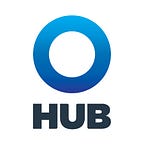Post-Pandemic Employee Communications Strengthen Employee Connections
By Meagan Tyson
In a year marked by extreme disruption, employers and workers alike are looking to re-establish some semblance of post-pandemic normalcy. Internal communication is more important than ever, especially when it succeeds at strengthening organizational ties. Employee benefits are integral to your value proposition, and a critical starting point.
Even before the coronavirus pandemic, effective employee communication has been a challenge: 71% of employees don’t read or engage with company emails; only 13% use the company intranet daily. Still, nearly three-fourths of employees believe they are missing out on company news. Here are ways to fix those issues moving forward.
Connecting is a matter of what you say and how
Think about the tone you’re using in your messaging. It should be simple and honest to be most effective. Consider these pointers:
- An informal, personalized approach is most effective. Use first person (“I” and “we”) or second person (“you” and “yours”).
- Keep your sentence structure simple, use bullet points and avoid acronyms.
- Be sensitive and transparent in acknowledging challenges and unknowns.
- Anticipate questions by answering the five W’s (who, what, where, when and why).
- Use a readability calculator.
Use the right channels and media
Technology shifts have changed media access and usage patterns, which vary by demographic. Millennials represent 50% of the workforce today (75% by 2025); along with the Gen Zs, they are leading the mobile-first employee communications trend. Then there are visuals. Most people only remember about 10% of something they heard 72 hours earlier. Add visuals, and retention jumps to 65%. If you leverage those trends in your communications, you’ll improve engagement. Some tactics include video messaging, live and on-demand; real-time updates on microsites outside the company firewall; text messages; and digital signage and banners.
What’s important to your people today?
The coronavirus will be top of mind with everyone for some time, so start communicating about your relevant benefits and policies today. Now is also the time to chart out your open enrollment communications for a remote working environment.
- Benefits to promote:
- COVID-19 testing availability.
- Telehealth benefits/discounts.
- Emotional well-being resources and benefits like Employee Assistance Programs (EAPs).
- Financial well-being tools and resources
- Virtual open enrollment — if this is viable for employees:
- Add something about keeping the status quo or not requiring active participation
- On-demand versus live sessions: Feature special guests (company executives, benefits experts); host a virtual benefits “fair.”
- Set up virtual office hours, using an online scheduler to schedule times for people to ask questions.
- Call to action is critical.
- Communications prerequisites: Information that’s easy to access, like a microsite outside the corporate firewall, a mobile app and digital guides. Investigate the enrollment platform’s capabilities, like embedded videos. Small incentives are acceptable, depending on circumstances (layoffs or furloughs) that may affect perceptions.
- Return to work readiness. As reopening phases in, use a variety of communications media so all employees have information on such topics as:
- Return to work policies.
- Changes to physical locations.
- Time off when people don’t feel well.
- Support that’s available to working parents.
